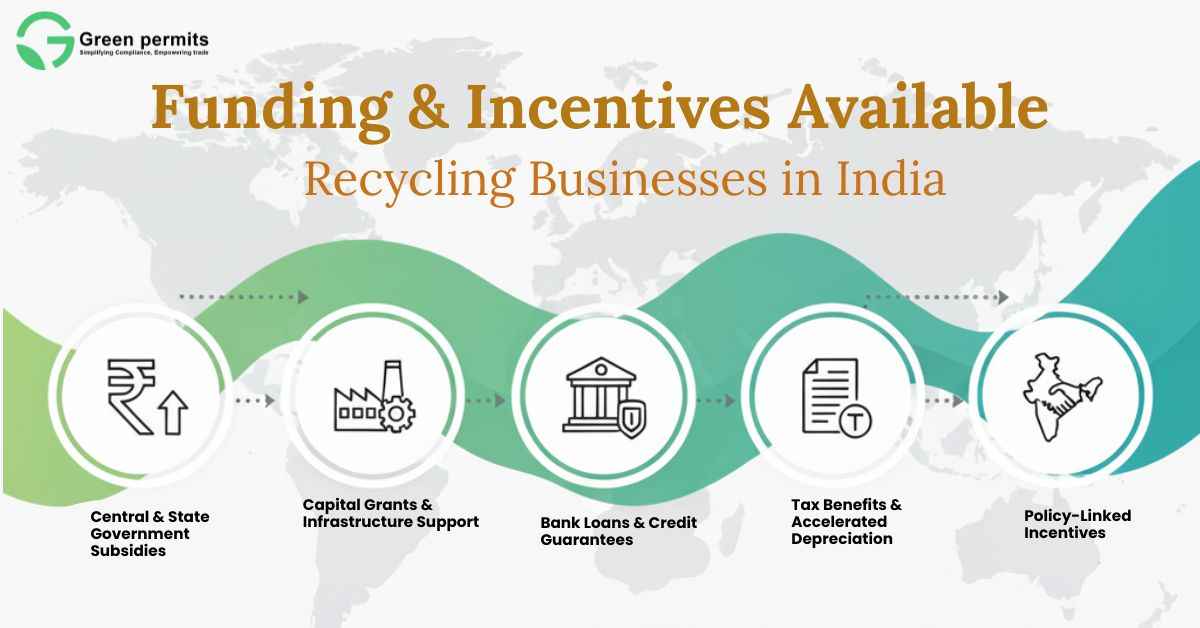"L'incidenza della SIDS è "SCOMPARSA" in Giappone dopo l'innalzamento dell'età vaccinale a 2 anni."
Dott. Pierre Kory, MD
Nel 1981, il Giappone ha posticipato la vaccinazione contro la pertosse (DTaP) fino all'età di 2 anni.
La mortalità infantile in Giappone è la più bassa al mondo, mentre gli Stati Uniti sono al primo posto per numero di decessi.
Negli anni '70, due decessi infantili sono stati collegati al vaccino contro la pertosse a cellule intere (DTwP). Ciò ha suscitato preoccupazione nell'opinione pubblica e il governo giapponese ha sospeso la vaccinazione di routine contro la pertosse.
Il governo ha poi introdotto il vaccino contro la pertosse acellulare (DTaP) nel 1981, per i bambini dai due anni in su.
Nel 1993, il Ministero della Salute, del Lavoro e del Welfare giapponese interruppe l'uso del vaccino combinato contro morbillo, parotite e rosolia (MPR) a causa di un'elevata incidenza di reazioni avverse, in particolare meningite asettica che provocò gravi lesioni e decessi.
Il Giappone attualmente offre vaccini monovalenti separati contro morbillo e rosolia. E non ha mai più reintrodotto il vaccino contro la parotite o il MPR combinato.
Nel 1994, la legge giapponese sull'immunizzazione fu rivista, trasformando tutte le vaccinazioni infantili da obbligatorie a "raccomandate" o volontarie.
Questa modifica politica significò l'eliminazione delle sanzioni per la mancata vaccinazione e il programma passò dalle vaccinazioni di massa presso i centri sanitari pubblici alle vaccinazioni individuali da parte di medici privati.
La modifica del 1994 rappresenta uno spostamento dell'enfasi politica dal dovere civico al rispetto della volontà individuale e al processo di consenso informato.
Il tasso di mortalità infantile negli Stati Uniti è "sproporzionatamente" più alto rispetto ad altri 16 Paesi...
Secondo i Centers for Disease Control and Prevention (CDC), nel 2022 il tasso di mortalità infantile negli Stati Uniti era di 5,6 decessi ogni 1.000 nati vivi.
I bambini negli Stati Uniti muoiono a tassi più elevati rispetto ai loro coetanei in altri 16 Paesi ad alto reddito. Il tasso di mortalità infantile in Giappone è tra i più bassi al mondo, con 1,7 decessi ogni 1.000 nati vivi.
Il tasso di mortalità infantile negli Stati Uniti è il triplo.
Dott. Paul Thomas, pediatra e autore del libro "Vax Facts"...
"Oltre 20.000 neonati muoiono ogni anno negli Stati Uniti, con un tasso di mortalità infantile complessivo di 5,6 decessi ogni 1.000 nati vivi. Il CDC classifica la SIDS come terza causa di morte, dopo difetti congeniti e parto pretermine, con 1.389 casi.
"I decessi che un tempo venivano classificati come indotti post-vaccino oggi sono classificati come 'sconosciuti'."
"Quando un neonato muore, indipendentemente da quanto tempo dopo la vaccinazione, medici legali e patologi non hanno più codici di decesso correlati al vaccino disponibili come opzioni; quel codice ICD è stato rimosso, quindi questi decessi vengono codificati come SIDS, sconosciuti o soffocamento."
"I pediatri non sono informati sul nesso causale tra morte infantile, vaccini e adiuvanti di alluminio che bloccano il centro respiratorio del cervello, quindi anche quando si verifica chiaramente, non lo fanno." riconoscerlo."
Ricerca citata linkata qui sotto nelle risposte...
"The Incidence of SIDS ‘DISAPPEARED’ In Japan After Raising The Age of Vaccination To 2yrs Old."
Dr Pierre Kory, MD
In 1981, Japan Delayed The DTaP Vaccine Until Children Were 2yrs old.
Japan's Infant Mortality Is The Lowest In The World, While The US Ranks #1 In Deaths.
In the 70s, 2 infant deaths were linked to the whole-cell pertussis vaccine (DTwP) caused public concern, the Japanese government suspended routine DTwP vaccination.
The government then introduced the acellular pertussis vaccine (DTaP) in 1981, for children aged two years & older.
In 1993, Japan's Ministry of Health, Labor & Welfare discontinued the use of the combined measles, mumps & rubella (MMR) vaccine due to a high incidence of adverse reactions, specifically aseptic meningitis that resulted in major injury & deaths.
Japan currently offers separate monovalent measles & rubella vaccines. And never re-introduced mumps vaccine or combination mmr again.
In 1994, Japan's Immunization Act was revised, changing all childhood vaccinations from mandatory to "recommended" or voluntary.
This policy change meant that there were no longer penalties for not vaccinating & the program shifted from mass immunizations at public health centers to individual vaccinations by private physicians.
The 1994 change represents a shift in policy emphasis from a civic duty to respecting the individual's will & the informed consent process.
U.S. Infant Mortality Rate Is ‘Disproportionately’ Higher Than 16 Other Countries...
Infant mortality rates in the U.S. as of 2022 are 5.6 infant deaths per 1,000 live births, according to the Centers for Disease Control and Prevention (CDC).
Children in the U.S. are dying at higher rates than their peers in 16 other high-income countries. The infant mortality rate in Japan is among the lowest in the world at 1.7 deaths per 1,000 live births.
The United States infant mortality is triple that rate.
Dr. Paul Thomas, MD Pediatrician & author of the book, 'Vax Facts'...
“Over 20,000 infants die in the USA annually, for an overall infant mortality rate of 5.6 deaths per 1,000 live births. The CDC lists SIDS as the number three cause of death, following birth defects and preterm birth, with 1,389 cases.
"Deaths that used to be classified as post vaccine induced are classified ‘unknown’ these days."
"When an infant dies, no matter how soon after vaccination, coroners & pathologists do not have any codes for vaccine-related death available as options anymore, that ICD code was removed, so these deaths are coded as SIDS, unknown, or suffocation."
"Pediatricians are not educated about the causal link between infant death, vaccines & aluminum adjuvants shutting down the breathing center of the brain, so even when it clearly occurs, they don’t recognize it."
Cited research linked below in replies...
Source:
https://x.com/ValerieAnne1970/status/2005223552539033608?t=vPk-7iBdyQnrdURA3PP5lw&s=19🚨"L'incidenza della SIDS è "SCOMPARSA" in Giappone dopo l'innalzamento dell'età vaccinale a 2 anni."
Dott. Pierre Kory, MD
Nel 1981, il Giappone ha posticipato la vaccinazione contro la pertosse (DTaP) fino all'età di 2 anni.
La mortalità infantile in Giappone è la più bassa al mondo, mentre gli Stati Uniti sono al primo posto per numero di decessi.
Negli anni '70, due decessi infantili sono stati collegati al vaccino contro la pertosse a cellule intere (DTwP). Ciò ha suscitato preoccupazione nell'opinione pubblica e il governo giapponese ha sospeso la vaccinazione di routine contro la pertosse.
Il governo ha poi introdotto il vaccino contro la pertosse acellulare (DTaP) nel 1981, per i bambini dai due anni in su.
Nel 1993, il Ministero della Salute, del Lavoro e del Welfare giapponese interruppe l'uso del vaccino combinato contro morbillo, parotite e rosolia (MPR) a causa di un'elevata incidenza di reazioni avverse, in particolare meningite asettica che provocò gravi lesioni e decessi.
Il Giappone attualmente offre vaccini monovalenti separati contro morbillo e rosolia. E non ha mai più reintrodotto il vaccino contro la parotite o il MPR combinato.
Nel 1994, la legge giapponese sull'immunizzazione fu rivista, trasformando tutte le vaccinazioni infantili da obbligatorie a "raccomandate" o volontarie.
Questa modifica politica significò l'eliminazione delle sanzioni per la mancata vaccinazione e il programma passò dalle vaccinazioni di massa presso i centri sanitari pubblici alle vaccinazioni individuali da parte di medici privati.
La modifica del 1994 rappresenta uno spostamento dell'enfasi politica dal dovere civico al rispetto della volontà individuale e al processo di consenso informato.
Il tasso di mortalità infantile negli Stati Uniti è "sproporzionatamente" più alto rispetto ad altri 16 Paesi...
Secondo i Centers for Disease Control and Prevention (CDC), nel 2022 il tasso di mortalità infantile negli Stati Uniti era di 5,6 decessi ogni 1.000 nati vivi.
I bambini negli Stati Uniti muoiono a tassi più elevati rispetto ai loro coetanei in altri 16 Paesi ad alto reddito. Il tasso di mortalità infantile in Giappone è tra i più bassi al mondo, con 1,7 decessi ogni 1.000 nati vivi.
Il tasso di mortalità infantile negli Stati Uniti è il triplo.
Dott. Paul Thomas, pediatra e autore del libro "Vax Facts"...
"Oltre 20.000 neonati muoiono ogni anno negli Stati Uniti, con un tasso di mortalità infantile complessivo di 5,6 decessi ogni 1.000 nati vivi. Il CDC classifica la SIDS come terza causa di morte, dopo difetti congeniti e parto pretermine, con 1.389 casi.
"I decessi che un tempo venivano classificati come indotti post-vaccino oggi sono classificati come 'sconosciuti'."
"Quando un neonato muore, indipendentemente da quanto tempo dopo la vaccinazione, medici legali e patologi non hanno più codici di decesso correlati al vaccino disponibili come opzioni; quel codice ICD è stato rimosso, quindi questi decessi vengono codificati come SIDS, sconosciuti o soffocamento."
"I pediatri non sono informati sul nesso causale tra morte infantile, vaccini e adiuvanti di alluminio che bloccano il centro respiratorio del cervello, quindi anche quando si verifica chiaramente, non lo fanno." riconoscerlo."
Ricerca citata linkata qui sotto nelle risposte...
🚨"The Incidence of SIDS ‘DISAPPEARED’ In Japan After Raising The Age of Vaccination To 2yrs Old."
Dr Pierre Kory, MD
In 1981, Japan Delayed The DTaP Vaccine Until Children Were 2yrs old.
Japan's Infant Mortality Is The Lowest In The World, While The US Ranks #1 In Deaths.
In the 70s, 2 infant deaths were linked to the whole-cell pertussis vaccine (DTwP) caused public concern, the Japanese government suspended routine DTwP vaccination.
The government then introduced the acellular pertussis vaccine (DTaP) in 1981, for children aged two years & older.
In 1993, Japan's Ministry of Health, Labor & Welfare discontinued the use of the combined measles, mumps & rubella (MMR) vaccine due to a high incidence of adverse reactions, specifically aseptic meningitis that resulted in major injury & deaths.
Japan currently offers separate monovalent measles & rubella vaccines. And never re-introduced mumps vaccine or combination mmr again.
In 1994, Japan's Immunization Act was revised, changing all childhood vaccinations from mandatory to "recommended" or voluntary.
This policy change meant that there were no longer penalties for not vaccinating & the program shifted from mass immunizations at public health centers to individual vaccinations by private physicians.
The 1994 change represents a shift in policy emphasis from a civic duty to respecting the individual's will & the informed consent process.
U.S. Infant Mortality Rate Is ‘Disproportionately’ Higher Than 16 Other Countries...
Infant mortality rates in the U.S. as of 2022 are 5.6 infant deaths per 1,000 live births, according to the Centers for Disease Control and Prevention (CDC).
Children in the U.S. are dying at higher rates than their peers in 16 other high-income countries. The infant mortality rate in Japan is among the lowest in the world at 1.7 deaths per 1,000 live births.
The United States infant mortality is triple that rate.
Dr. Paul Thomas, MD Pediatrician & author of the book, 'Vax Facts'...
“Over 20,000 infants die in the USA annually, for an overall infant mortality rate of 5.6 deaths per 1,000 live births. The CDC lists SIDS as the number three cause of death, following birth defects and preterm birth, with 1,389 cases.
"Deaths that used to be classified as post vaccine induced are classified ‘unknown’ these days."
"When an infant dies, no matter how soon after vaccination, coroners & pathologists do not have any codes for vaccine-related death available as options anymore, that ICD code was removed, so these deaths are coded as SIDS, unknown, or suffocation."
"Pediatricians are not educated about the causal link between infant death, vaccines & aluminum adjuvants shutting down the breathing center of the brain, so even when it clearly occurs, they don’t recognize it."
Cited research linked below in replies...
Source: https://x.com/ValerieAnne1970/status/2005223552539033608?t=vPk-7iBdyQnrdURA3PP5lw&s=19











